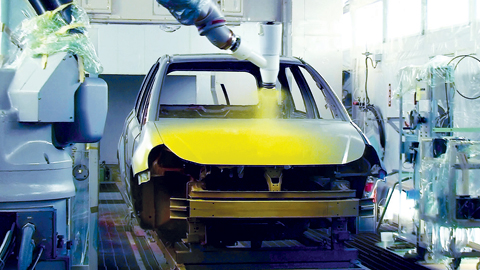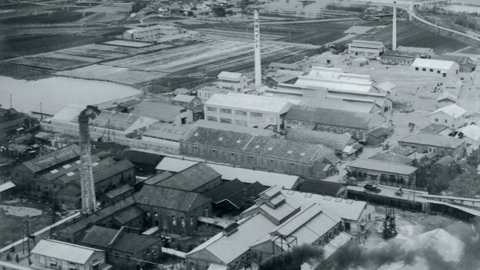President Hiroshi Ishino tells Brunswick’s Daisuke Tsuchiya how innovation and traditional values are the drivers of Kansai Paint’s global success
Download this article in Japanese (PDF)
Kansai Paint has done most of its business in recent decades sheathing cars on Japan’s assembly lines with attractive, durable colors. But as it approaches its 100th anniversary and expands internationally, the Japanese paint maker has also found that its roots in the construction sector offer a new path for innovation: paints to combat disease. ALES Shiquy is a plaster-based indoor product that captures odors and traps viruses and bacteria, making it a natural for clean rooms and clinics. ALES AntiMosquito is a mosquito-repellent paint that the company introduced in Malaysia and Indonesia to help combat the spread of the dengue virus.
Overseeing both the global expansion of Kansai Paint and its development of technologically advanced products is Hiroshi Ishino, a former Mitsubishi Corp. executive who became Kansai’s President and Representative Director in 2013. At the company’s offices in Tokyo, we spoke with Ishino about the intertwined threads of innovation, trust and endurance that are the hallmarks of any successful business. Ishino stresses attention to customer satisfaction and making sure core business offers a clear benefit to society. Most important, he insists on a flexibility that seems more typical of a much smaller company. “I don’t believe in a ‘one size fits all’ approach,” he says.
The company’s values can be traced back to its founder, Katsujiro Iwai, who was born near Kyoto in 1863. His childhood was an exciting time for Japan: in 1868, a long era of samurai leadership and national isolation policy was over. A new emperor designated his reign “Meiji,” or “enlightened rule,” and set the country on a path of modernization that resulted in sweeping social transformations over his 44-year reign.
Founded in Osaka in 1918, Kansai Paint was a product of that push to modernization. But in shaping the company, Iwai also carried with him traditional values learned from his parents – values Ishino still considers bedrock for Kansai’s success. From his father, Iwai was instructed to “become a human being who benefits the nation.” And from his mother, he was taught to “bear all difficulties,
no matter what.”
How does Iwai’s commitment to endurance – “bear all difficulties” – still inspire the company?
Some things can’t be done overnight. For those, that “never give up” spirit is absolutely needed. Taking on challenges, doing difficult things, enhances your sense of purpose – it makes you alive.
Making paint is surprisingly difficult. There are all kinds of elements in the chemicals and the conditions of its intended use. Temperature, humidity, the material being painted – they all need to be considered. Then there’s equipment and skill.
Faced with a difficult problem, you need the ability to carry through with it. That’s what we mean by “never give up.” After that – and this is true in any industry – you must be innovative to succeed. We were the first in the country to create lacquer – the traditional paint in Japan – from petroleum products. That type of innovation is one reason we have maintained our products for a long time.
Another reason is how we respond to the changing needs of the age. In each generation, some people join the organization who see how we can better serve customers. Over the last 50 years, our business shifted from building construction to shipbuilding and from shipbuilding to automobiles. Since the Lehman Brothers collapse, around 2007 or 2008, we have also become more international.
That ability to change is the point. Our endurance as a company comes back to our motto: to contribute to society and be customer-focused. In our mission statement, that’s the first line, our top priorities. That means we’re ready to be flexible and respond to the customers’ needs.


